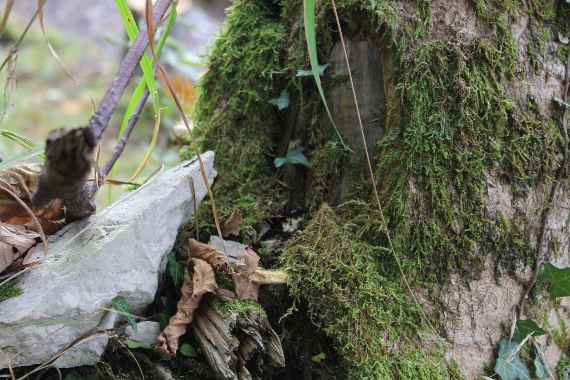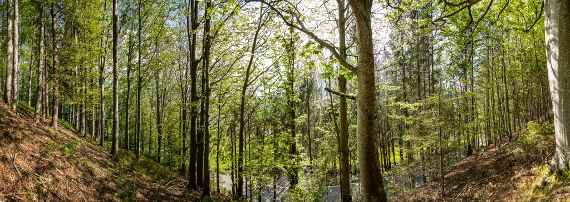Is there THE ideal protective forest?
In order to provide the best possible protection against natural hazards the forest must fulfil several requirements. Depending on the natural hazard process the criteria for the ideal protective forest are somewhat different. In general a decent protective forest is as dense as possible and the trees are healthy and vital. If several tree species are present is lowers the risk of a complete loss of the forest, if one tree species does not cope well with the future climate.
Depending on the natural hazard process – and of course on the altitude and site conditions - the “ideal” protective forest looks different:
In the event of rockfall the trees need to be able to heal wounds well. The sycamore maple is particularly suitable for this purpose. In addition, thin and thick trees are needed at the same time. If a stone hits a thick trunk, it loses a lot of energy, slows down or even stops completely. If he hits a thin one, it should direct the stone back towards the thick trunks.
In the case of avalanches a dense forest cover is particularly important in the release area. If snow falls a good part of it remains on the treetops. A part evaporates again, while the other part tumbles onto the snowpack on the ground creating a discontinuity in the snowlayers. This decreases the risk of avalanches.
In case of intensive or long-lasting rain the forest soil is the best storage. The pores and cavities in the ground are filled so the water is slowed down before reaching the next stream or torrent. The more ground vegetation and the looser the soil, the better. The bedrock and the thickness of the soil also play an important role.
Different tree species, thin and thick stems next to each other, sufficient young, new trees - this is the basic recipe for a stable and climate-proof protective forest! Depending on the natural hazard, altitude level, geology and location in Austria, the "ideal" protective forest differs in its composition.


